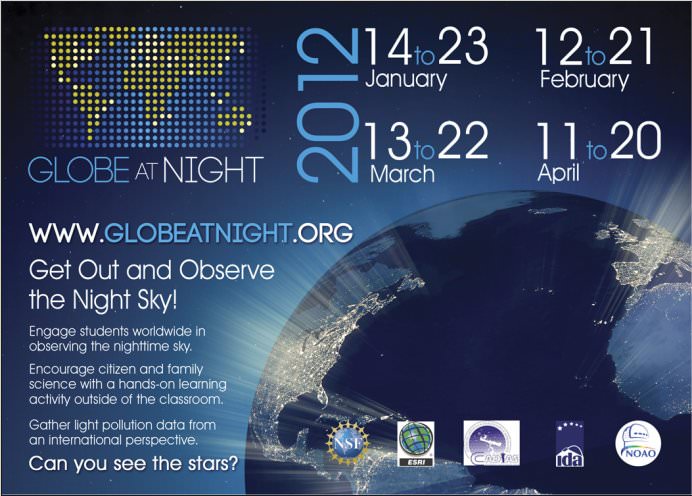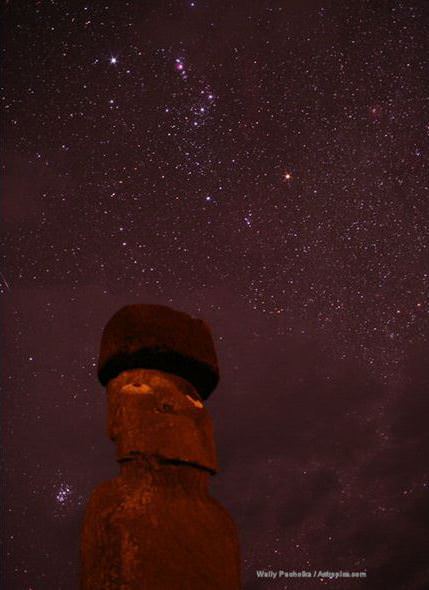[/caption]
How dark are your skies? GLOBE at Night wants to know! Join the 6th annual worldwide GLOBE at Night campaign, which is going on right now in the northern hemisphere. “We are running two campaigns this year, from February 22nd to March 6th and from March 22nd to April 4th in the northern hemisphere and March 24th to April 6th in the southern hemisphere,” said Rob Sparks from the National Optical Astronomy Observatory, which is one of the sponsors for this year’s campaign.
By participating in the international star-hunting campaign, you will help address the problems of light pollution locally as well as globally. More participants are needed this year, so sign up to be a citizen scientist today!
Light pollution is a serious and growing global concern. With half of the world’s population now living in cities, many urban dwellers have never experienced the wonder of pristinely dark skies and perhaps, maybe never will. But light pollution is also a concern in areas of safety, energy conservation, cost, health and effects on wildlife, as well as our ability to view the stars.
But this is also one of the easiest environmental problems you can address on local levels.
GLOBE at Night is a wonderful way for everyone around the world to participate to raise public awareness of the impact of artificial lighting on local environments. This event encourages everyone – students, educators, dark sky advocates and the general public – to measure the darkness of their local skies and contribute their observations online to a world map.
The campaign is easy and fun to do, and as in previous years, there are just five easy steps to participate. But this year, there is now an app for that, where participants can submit their measurements in real time if they have a smart phone or tablet.
“There is now a mobile website to submit data,” Sparks told Universe Today. “It will take the GPS data, time and date from your phone and has a cool little graphic to help you determine the brightness of the sky. It even had a red screen feature for night use.” The app can be found at this link.
To participate, you will match the appearance of the constellation Orion in the first campaign (and Leo or Crux in the second campaign) with simple star maps of progressively fainter stars found. Then you submit your measurements, including the date, time, and location of your comparison. After all the campaign’s observations are submitted, the project’s organizers release a map of light-pollution levels worldwide. Over the last five annual 2-week campaigns, volunteers from more than 100 nations contributed 52,000 measurements, one third of which came from last year’s campaign.
The five easy star-hunting steps are:
1) Find your latitude and longitude.
2) Find Orion by going outside an hour after sunset (about 7-10pm local time).
3) Match your nighttime sky to one of the GLOBE at Night magnitude charts
4) Report your observation.
5) Compare your observation to thousands around the world.
Go to the GLOBE at Night website for all the details. There is even a 10-minute audio podcast on light pollution and GLOBE at Night. Or download a 45-minute powerpoint and accompanying audio. GLOBE at Night is also on Facebook and Twitter.
Be a part of GLOBE at Night and help the campaign exceed the 17,800 observations contributed last year. Your measurements will make a world of difference.
Thanks to the GLOBE at Night team for securing permission for Universe Today to post the lead image, from Wally Pacholka from AstroPics.com and TWAN (The World At Night).




